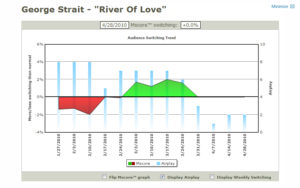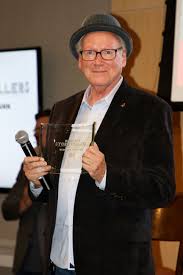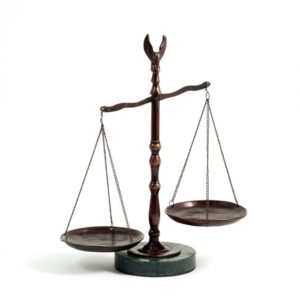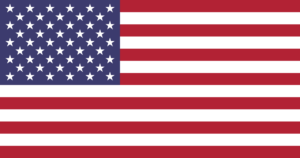Kudos to R.J. Curtis
Yesterday the CRS held a webinar called “A Discussion Of Gender Balance At Country Radio: Part One”

I had thought that R.J. Curtis would stay away from this topic. Curtis kicked off the webinar by correctly sighting the motto, “Growth Through Sharing.” The founding members of CRS believed that the country format could be stronger than Pop, Rock, and Adult Contemporary formats by sharing research, ideas, promotions and concepts within the format itself. They also believed that when radio and records embraced each other that those synergies would make country stronger.
There was one mention of Dr. Jada Watson. She did not do any research. All she did was compile Mediabase reports. Jeff Green did more than Watson!
What did we learn yesterday?

Jeff Green did an excellent job of showing us the percentage of singles released to radio by females. There were also excellent graphs showing the percentages of singles by females that got airplay of certain levels. Jeff’s biggest reveal was that when the measurement of country radios largest markets by PPM technology there were changes. Country radio played singles longer than before. That meant shorter playlists and fewer adds.
Jeff also pointed out that County is a top-performing format. He also pointed out that the cumes of country radio break in favor of women listeners. I wish he had talked about the real currency we worry about. That is average quarter hours. While the cumes of country are 55% female there and even more important metric. Nielsen boils radio listening down to a uniform currency called average quarter hours. One person listens for one hour that is four-quarter hours. Four people listen 15 minutes each that also is four-quarter hours. Females deliver 68% of the average quarter hours to radio! Women listen longer than men (in the aggregate) to country radio. The point is that country radio programmers research and caters to female listeners.
We all know country radio ultimately will tune their metrics to optimize cumes and time spent listening and time spent exposed.
Hey, Jeff, the entry of Soundscan changed things too!
Technology has allowed us to get a clearer picture with more accuracy. Larger samples with precise attribution mean more accuracy and a much higher level of confidence.

There was no mention of MScore. That’s okay. John Shomby covered the basics of radio programming and ratings very efficiently. MScore is a product that takes the Nielsen meter holders and shows the tune in and tune out on each individual song. Programmers use it to increase the rotation and plays on songs that perform well and inversely reduce the rotation and plays on songs that perform at a lesser level.
My claim is that our programmers don’t care about gender when we increase or decrease the spins on a song. We care about the relative strengths of the songs based upon the response of the listeners. This is truly the free market at work.
The discussion of “GUT” cited as a top reason to add records is interesting. John Shomby explained that a programmer knows his or her station and audience. Then they make adds based upon a fit into that station’s sound. He referred to it as a strategy. In our research, we find that our listeners think the ideal station has more tempo that our station has now. So we then have a bias against ballads. We tune the programming to drive the tempo more. That way we are a better product matching the ideal the listeners want. The same might go for other music metrics like a desire for more gold, more twang, etc. We call these “music lanes.” Calling it “GUT” really besmirches what it actually is.

Think of it this way. Captain Sully Sullenberger “used his gut” to land a plane on Hudson after his plane lost both engines. Well yes and no. Yes, if you consider “GUT” his years and years of experience and training. No, if you call it thousands of hours of flying planes, classes in Flight School and reading reports of NTSB Crashes from the past.
Rachel Skaggs presented data on the number of female artists who have won Grammy’s. Also, industry polls on “I wish I had written that song” and songs on country radio counted in Billboard.
I thought John Shomby helped bring clarity to the Grammy issue. Grammy’s are very disconnected from Country Radio. Over the years we have had many artists get Grammy’s that we did not play much on Country Radio. The list is long. Glen Campbell from 2015, Asleep At The Wheel, Alison Krauss, Sturgill Simpson, and R.J. made mention of that 2004 compilation “Songs of the Louvin Brothers.” So when I hear, “but it won a Grammy!” I say do the listeners care?

Music Critics were mentioned. I’ve told many record promoters over the years, “if Robert K. Oermann likes a record I’ll stay away from it. However, if he doesn’t like it I’ll give it a try.” These are the opinions of a class of “journalist elites” who have never programmed a radio station where they were pressured to drive ratings in the real world.
I’m not sure R.J. is willing to bring up in Part 2 of this discussion, “are we asking the right question?”
The description of the webinar starts “There has been plenty of debate recently challenging Country music to find a better male-female balance when it comes to radio airplay.”

What is “Better Balance?”
Isn’t that like “Trucks are outselling sedans! Join our discussion to get a better balance of sedans to trucks in America” ????
I understand the optics of the percentages of females at country radio. The current metrics are not the result of misogyny or sexism. They are the result of the free market.
I have long challenged someone in Country radio to program a rated station in a PPM market to play 40% to 50% females. (I strongly believe the rating result would prove that the way radio is operating today results in the highest possible time spent exposed.)
We want a “better balance” because we don’t want sexism. We want a “better balance” because we want fairness.

Welcome to America and a Free Market.

We do have equal opportunity. The doors of every record label are OPEN for business. Female acts can send demos and make their pitch for record contracts. The woman of Nashville can start an all-female label if they like. All female owned, all female executives and an all-female roster. Why that might even drive the one metric mention by Jeff Green that seems to be meaningful, the number of singles released by females. (30%)
As to the number of spins on country radio, those 30 percent of releases get reduced in airplay and spins.
So we have equality of opportunities but NOT EQUALITY OF OUTCOMES!
The spins on country radio are up to the response of the listeners. Jeff Green did not drill down to see that during the late 90s (95/96/97/98) when we were playing our highest percentage of females what happened to time spent listening. I’ll tell you it went down considerably. That is when I studied this issue AND tested it. I programmed stations with lower percentages of females and defied that national averages on time spent listening.
My question to the CRB… is a “better balance” an artificially inflated number of females? Or is it the desire for the numbers to be different than what our actual listeners want as the result of listening to our Country radio product and brands across America?
Keith Hill – I believe in Growth Through Sharing!
